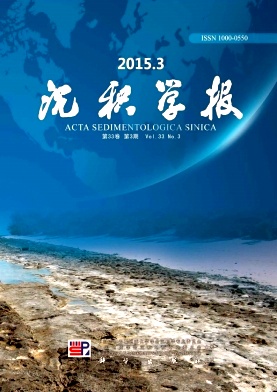The Palaeosalinity Analysis of Paleogene Lutite in Weihe Basin
doi: 10.14027/j.cnki.cjxb.2015.03.006
- Received Date: 2014-04-23
- Rev Recd Date: 2014-07-07
- Publish Date: 2015-06-10
-
Key words:
- Weihe Basin /
- Paleogene /
- paleosalinity /
- chemical index of alteration
Abstract: The main emergence stratum of Paleogene in the Weihe Basin, which hold in the Ordos block and Qinlingorogenic belt, include Honghe Formation and Bailuyuan Formation. In recent years, helium gas in the basin found in the Cenozoic strata has a prospect, it's necessary for us to research on sedimentary environment. Through the analysis of major and trace elements of field samples, the Paleogene sedimentary environment was revealed by quantitative semiquantitative analysis involving calculation using Adams formula, equivalent boron suggested by Walker, B/Ga ratio, Sr/Ba ratio methods and the variation characteristics of chemical index of alteration CIA. The results indicate the range of palaeosalinity of Honghe Formation and Bailuyuan Formation is 2.2‰~11.7‰, and display that Weihe basin belongs fresh water lake, which are warm, moist climate overall, regional drought and salt water sedimentary environment. At the same time,we find that chemical index of alteration have negative correlation with salinity value. By the lacustrine environment in Honghe Formation to river and delta facies environment in Bailuyuan Formation, CIA index increases, and the salinity of the B/Ga ratio is reduced, which show that CIA values, to some extent, reflect the characteristics of salinity. Because of bioconcentration the samples have high Sr values, which result in abnormal points when Sr/Ba ratio reflect salinity.
| Citation: | LI ZhiChao, LI WenHou, LAI ShaoCong, LI YongXiang, LI YuHong, SHANG Ting. The Palaeosalinity Analysis of Paleogene Lutite in Weihe Basin[J]. Acta Sedimentologica Sinica, 2015, 33(3): 480-485. doi: 10.14027/j.cnki.cjxb.2015.03.006 |






 DownLoad:
DownLoad: